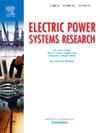Dynamic equivalencing of power systems using bus impedance matrix
IF 4.2
3区 工程技术
Q2 ENGINEERING, ELECTRICAL & ELECTRONIC
引用次数: 0
Abstract
In real-time power system operations, frequent assessment of system operating limits for large, interconnected networks through dynamic simulations is critical for maintaining stability and reliability for system operators. To address the associated computational challenges and reduce simulation time, portions of the network must be represented using equivalent models. This paper introduces a methodology that involves solving a set of linear equations to develop equivalent models at regular intervals, reflecting real-time system conditions. The proposed structured and repeatable methodology facilitates the frequent updating of the external equivalent model while limiting the computational burden to practically acceptable levels. The dynamic simulation results for the study area, comparing the full system model and the reduced model derived through the proposed methodology, demonstrate a high degree of consistency. While the proposed methodology exhibits certain limitations, it also presents notable strengths, which can be further explored and refined to enhance the accuracy of the reduced model.
基于母线阻抗矩阵的电力系统动态等效
在电力系统实时运行中,通过动态仿真频繁评估大型互联网络的系统运行极限,对于维护系统运行的稳定性和可靠性至关重要。为了解决相关的计算挑战并减少模拟时间,必须使用等效模型来表示网络的部分。本文介绍了一种方法,该方法涉及求解一组线性方程,以建立定期的等效模型,反映实时系统状况。所提出的结构化和可重复的方法促进了外部等效模型的频繁更新,同时将计算负担限制在实际可接受的水平。研究区域的动态仿真结果,通过比较完整的系统模型和通过所提出的方法推导的简化模型,证明了高度的一致性。虽然提出的方法有一定的局限性,但它也有明显的优势,可以进一步探索和改进,以提高约简模型的准确性。
本文章由计算机程序翻译,如有差异,请以英文原文为准。
求助全文
约1分钟内获得全文
求助全文
来源期刊

Electric Power Systems Research
工程技术-工程:电子与电气
CiteScore
7.50
自引率
17.90%
发文量
963
审稿时长
3.8 months
期刊介绍:
Electric Power Systems Research is an international medium for the publication of original papers concerned with the generation, transmission, distribution and utilization of electrical energy. The journal aims at presenting important results of work in this field, whether in the form of applied research, development of new procedures or components, orginal application of existing knowledge or new designapproaches. The scope of Electric Power Systems Research is broad, encompassing all aspects of electric power systems. The following list of topics is not intended to be exhaustive, but rather to indicate topics that fall within the journal purview.
• Generation techniques ranging from advances in conventional electromechanical methods, through nuclear power generation, to renewable energy generation.
• Transmission, spanning the broad area from UHV (ac and dc) to network operation and protection, line routing and design.
• Substation work: equipment design, protection and control systems.
• Distribution techniques, equipment development, and smart grids.
• The utilization area from energy efficiency to distributed load levelling techniques.
• Systems studies including control techniques, planning, optimization methods, stability, security assessment and insulation coordination.
 求助内容:
求助内容: 应助结果提醒方式:
应助结果提醒方式:


